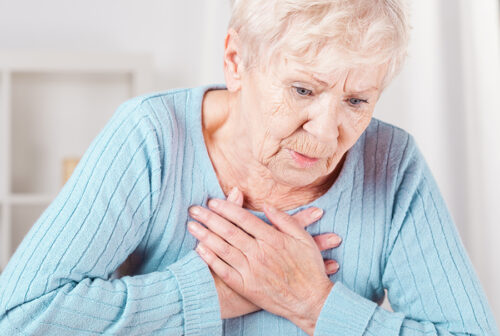Obscure Medical Terms
You simply must name things. There’s no getting ’round it. No matter who or how many of the uninitiated rag on you or shame you for being erudite, grandiose or obscure, you can’t just keep using a thing’s description as its name!
You just have to give it a name if you’re going to have a discussion about “that odd noise emanating from your stomach when you’re hungry” or “you know that massive pain in your brain and entire face when you eat ice cream”… even if its name IS barely pronounceable.
Medical Terms: Takotsubo cardiomyopathy – “Broken Heart Syndrome”, probably not what you think
And NO, I’m not talking about supercalafragilisticexpealidoshus—I’m talking about things that you might actually use in a sentence. Here are some medical terms you could actually want to know and even use.
Medical TermsYou actually might use around the house
Ok, let’s take a stab at some of the most commonly used terms for some physical/medical conditions.
Sphenopalatine ganglioneuralgia
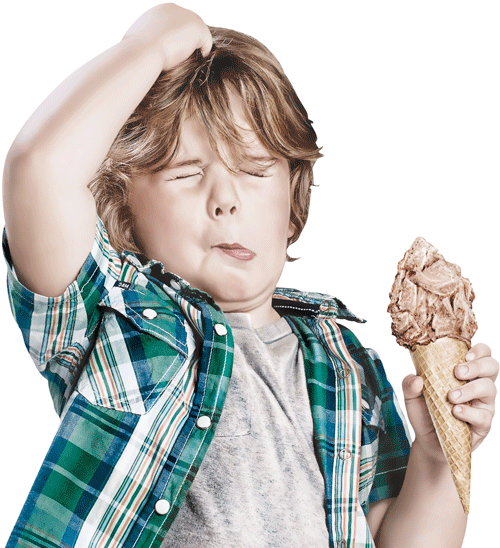
Types like me know where the sphenopalatine bone is, and the sphenopalatine ganglia. And we know what neuralgia is; so, this makes perfect sense to me. But perhaps we all know this tongue-twister better as: BRAIN FREEZE, or “ice-cream headache.” It’s the transient pain in the roof of the mouth after ingestion of certain foods, usually cold or frozen.
It’s what happens when a very-low temperature food such as a popsicle, ice-cream bar or even cold drink contacts the hard palate or roof of one’s mouth. It’s a transient but painful headache that is often quite intense and makes your face scrunch up and eyes go funny.
The exact cause is unknown but is thought to be related to a sudden constriction and then dilatation of blood vessels involving the roof of the mouth, sending painful impulses along the trigeminal nerve.
Such a headache generally lasts less than a minute or 5, and the simplest self-treatment is to place the warm tongue against the roof of the mouth. In one study, ice cream headaches occurred in about two thirds of 10-14-year-old students and were more common than in adults; because most people learn quickly to not bolt-down cold food. The obvious prevention measure is to eat ice cream… slowly.
Heloma Durum
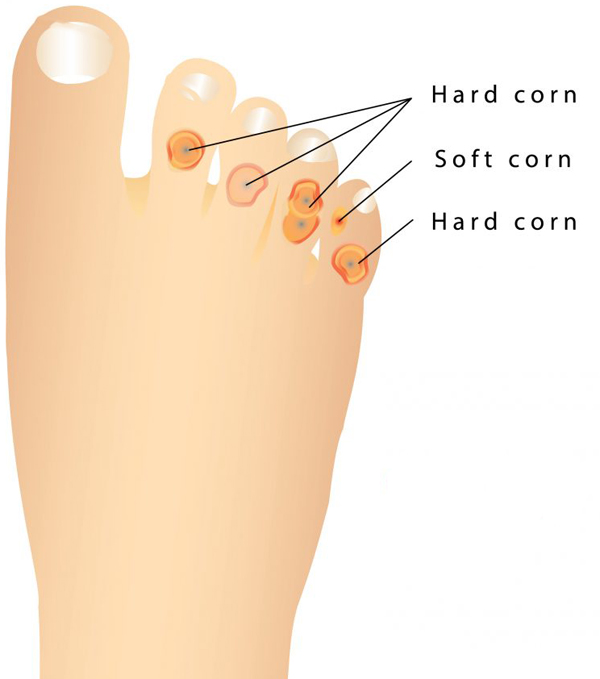
A “Heloma Durum” is a hard thickened area of skin, usually over a joint or pressure point. “Helioma” is the thickened skin and “durum” means hard; but, among friends, they go by their nickname: “corns.”
Corns (or clavus) occur as the result of intermittent pressure and frictional forces, and most typically occur on the feet. These circumscribed, hyperkeratotic (thickened skin) lesions may be hard (ie, heloma durum) or soft (ie, heloma molle). Proper shoes, soft socks, and shoe inserts are common preventive measures; home remedies include protective pads.
These troublesome lesions are more common in patients with bunions, a hammertoe, or a bone spur. In patients with diabetes or impaired circulation, an infected corn can be the trigger for much more serious problems. If treatment is necessary, the corn can be trimmed away, or removed with the application of a salicylic acid patch. Rarely, surgery may be necessary to reshape the underlying bone that’s causing the pressure point.
Singultus
“Singultus” is defined in the medical code book (ICD-10) as “an involuntary contraction (myoclonic jerk) of the diaphragm that may repeat several times per minute.” And it doesn’t take a doctor to recognize them: hiccups; but, we do take them seriously.

Although nearly always an innocuous self-limiting annoyance, by the time we get to see them [guidelines: continuous for 48 hours] they are more than a mere annoyance, are associated with some morbidity (if only exhaustion) and even very rarely mortality.
The cause of hiccups in children and infants is rarely found. Brief episodes in adults are usually benign and self-limited; but surgeons know that persistent hiccups after abdominal surgery can be a sign of a subphrenic abscess.
Typically, no treatment is required. And many huge scientific reviews found no evidence of benefit from either pharmacologic or nonpharmacologic therapy; which, alas and alack, nearly always brings out internet idiocy.
I’ve literally just read on the internet today that hiccups are: spiritually related, bad and connected to all of: Hidden Negative Emotions (all of em), unexpressed thoughts, a weak spiritual connection, someone trying to control you, someone gossiping about you, past karma haunting you, a close friend or family member’s ill health, an omen to stay calm and a message from the spiritual realm.
On the next site it then read: Hiccups are good and a sign of spirituality, good luck, love, someone thinking of you, your ‘soulmate’ is experiencing the same thing and/or that you’re about to fall in love.
I hope none of you fall for that kind of dysfunctional thinking. What I know is that: they are caused by “something” stimulating the diaphragm to spasmodically contract and almost never last longer than a few minutes. What helps me, when I get them, is trying and eventually succeeding to “not think about them.”
Sternutating

“Sternutating”—is the sudden, forceful, involuntary expulsion of air from the nose and mouth caused by irritation to the mucous membranes of the upper respiratory tract. Frankly, I’d rather say “sternutating” than attempt the Latin sternuere; but the simple “sneezing” beats them both.
It’s usually triggered by a viral upper respiratory infection, environmental allergies, or inhalation of an irritant. And, believe it or not, just stepping into strong light, such as sunlight, can induce sneezing in up to 25% of individuals. AND, just as odd, many people swear that they always come in groups of three! Go figure.
There’s even a named “ACHOO” syndrome (Autosomal dominant Compelling Helio-Opthalmic Outburst), an inherited autosomal dominant trait. Uncommon and severe, it produces uncontrollable sneezing in response to bright light.
Pope Gregory I (known as Saint Gregory the Great, 540-604) is the one who got the custom of saying “god bless you” going back in the Middle Ages when the Bubonic Plague was ravaging the world. The Plague has as its symptoms sneezing and coughing, and people truly needed a blessing because it was usually fatal.
Borborygmus
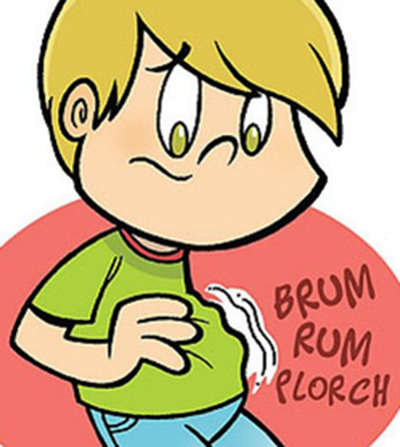
On a lighter note, “Borborygmus” is more of an embarassment than a medical problem. After all, who wants the sound of bubbly-rumble coming from their belly in polite company?
“Borborygmus” or “borborygmi” is the Greek term to identify what we commonly call “bowel sounds.” The word just sounds like it belongs in the belly.
Actually where in the belly they come from is still a mystery but CT scans sort of point to either: the right lower quadrant (ileocecal valve); or, the epigastrum (pylorus). Computerized abdominal auscultation reveals two likely areas:
Doctors usually don’t get involved unless there are other symptoms in the belly than just “growling.” Now, ABSENCE of bowel sounds when you should have them, THAT’s another story altogether. That’s called an ileus. Hypomotility of the GI tract can mean obstruction such as that seen after abdominal surgery.
Veisalgia

This a bane of Pediatrician everywhere! Teenage drinking has increased substantially and “Veisalgia”, hangovers along with it.
The medical term to describe the unpleasant symptoms of excessive consumption was only coined recently even though alcohol has been imbibed for thousands of years. Faculty from the Veterans Affairs Medical Center and the University of California, San Francisco, combined a Norwegian word, kveis, which translates loosely as “uneasiness after debauchery,” and the Greek word algia, meaning “pain.”
However, “Hangover” is so commonly used that my money is on it persisting in using despite the researchers desire for their 15-minutes-of-fame.
Well-known symptoms include headache, diarrhea, nausea, tremor, and fatigue. Although suggestions for treatment abound, a systematic review of randomized controlled trials concluded that there was no evidence to support commonly suggested cures.
Unguis Incarnatus
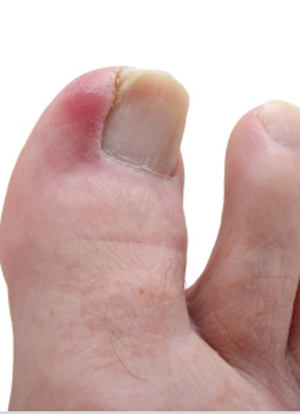
“Unguis Incarnatus” is not commonly used. Onychocryptosis, meaning “hidden nail,” is even less so. They both mean “Ingrown Toenail” and they hurt more substantially than one would think.
Treatment consists of elevating the edge of the inflamed nail from the nail bed. If the nail is too ingrown to do this without pain, soaking the foot in warm water may soften the nail enough to allow elevation of the edge without much pain. However, a nail block may be needed.
In my practice, I have seen and relieved many of these using soaks and wedging a tiny piece of cotton to elevate the edge of the nail; followed by meticulous adherence to ONLY trimming the nails STRAIGHT ACROSS and NOT CURVED. If surgery is needed, partial nail plate excision and curettage of the nail bed excision usually results in permanent relief of symptoms.
Fun Fact: in mammals ranging in size from a rat to an elephant, toenail growth rate is about the same.
Hordeolum
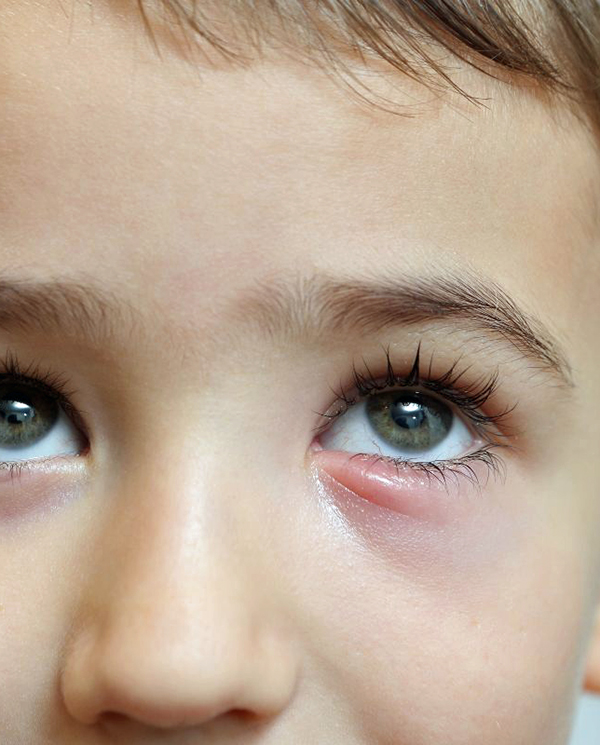
“Hordeolum” is the medical term used to describe an acute focal infection (usually staphylococcal) involving either the glands of Zeis (external hordeola, or styes) or, less frequently, the meibomian glands (internal hordeola).
Normal people call this a “stye” and it’s like a small, tender infection of one of the tiny glands along the eyelid. It hurts, and makes people look at you and wince.
The term is derived from the Latin word for “barley,” presumably because the lesion resembles a grain of barley. They usually improve within 2 weeks on their own; but doc’s often prescribe antibiotics if there is drainage or an associated conjunctivitis. You can do lid scrubs and apply frequent warm compresses.
Parulis
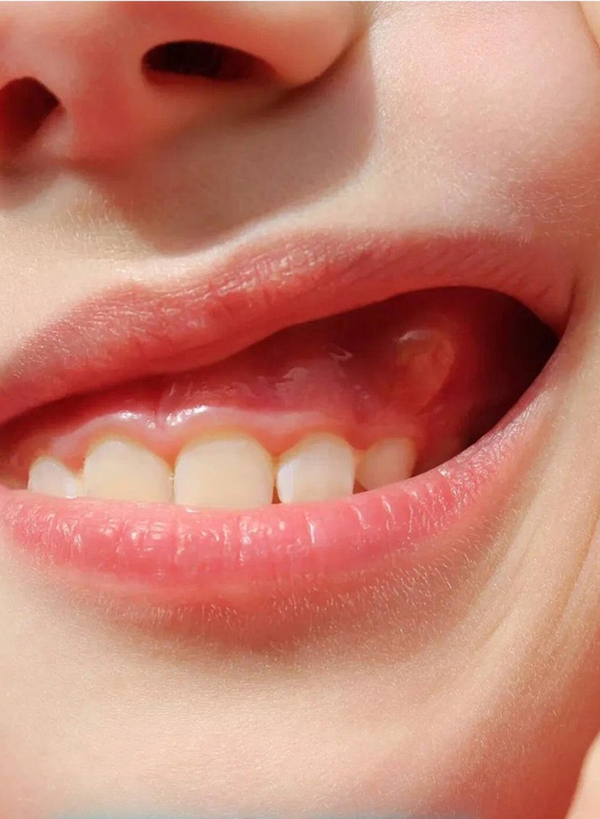
“Parulis”—An area of infection on the alveolar process of the mouth i.e. a “gum boil.” It can also be caused by some blunt trauma to the jaw.
The word derives, as do many of our medical terms, from the combination of two Greek words: para, meaning “near or next to” and oulon, meaning “gum.” The term is similar to “epulis,” which refers to any growth, not necessarily inflammatory, arising on the gingival or alveolar surface of the mouth.
Gum boils are usually found at the opening of some sinus tract that has developed as a result of a chronic tooth infection or abscesses. A parulis may be raised or appear as a red-to-yellow ulcer that bleeds easily and exudes pus. Gum boils are painful lesions requiring treatment by a dentist.
Takotsubo cardiomyopathy
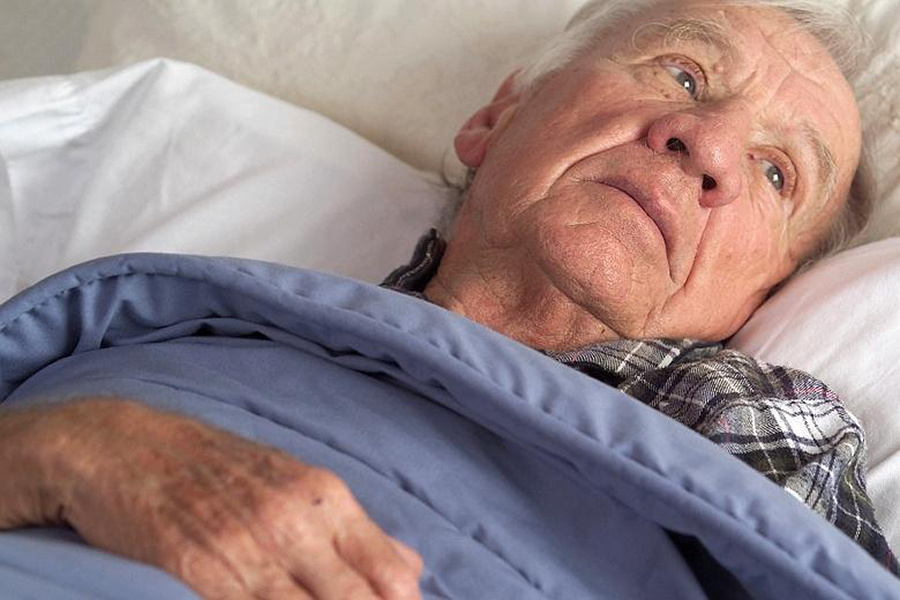
I did not learn about “Takotsubo cardiomyopathy” in medical school or even residency. Of course, we learned about heart attacks and other myopathies, and we knew that stress could cause pretty much anything including worsening heart problems; but, the term just hadn’t been coined back then.
So much stress surrounds a “broken heart” (the emotion) and it occurs so often, that it now has been described as its own entity: “Takotsubo cardiomyopathy,” “stress cardiomyopathy,” or the “Broken heart syndrome.” It is often a transient cardiac syndrome resulting from severe emotional or physical stress and mimicking acute coronary syndrome. Although sometimes the damage can be permanent.
The Japanese word takotsubo translates to “octopus pot,” describing the shape of the left ventricle during systole seen on imaging studies in these patients.
A recent study of individuals experiencing profound grief as the result of a loss of a spouse, found that the stress may result in levels of inflammation high enough to cause actual heart damage. These stress hormones appear to be dose-related; namely, spousally bereaved individuals with greater levels of grief develop higher levels of inflammation than those who experience less severe grief.
[https://www.medscape.com/viewarticle/904389]

